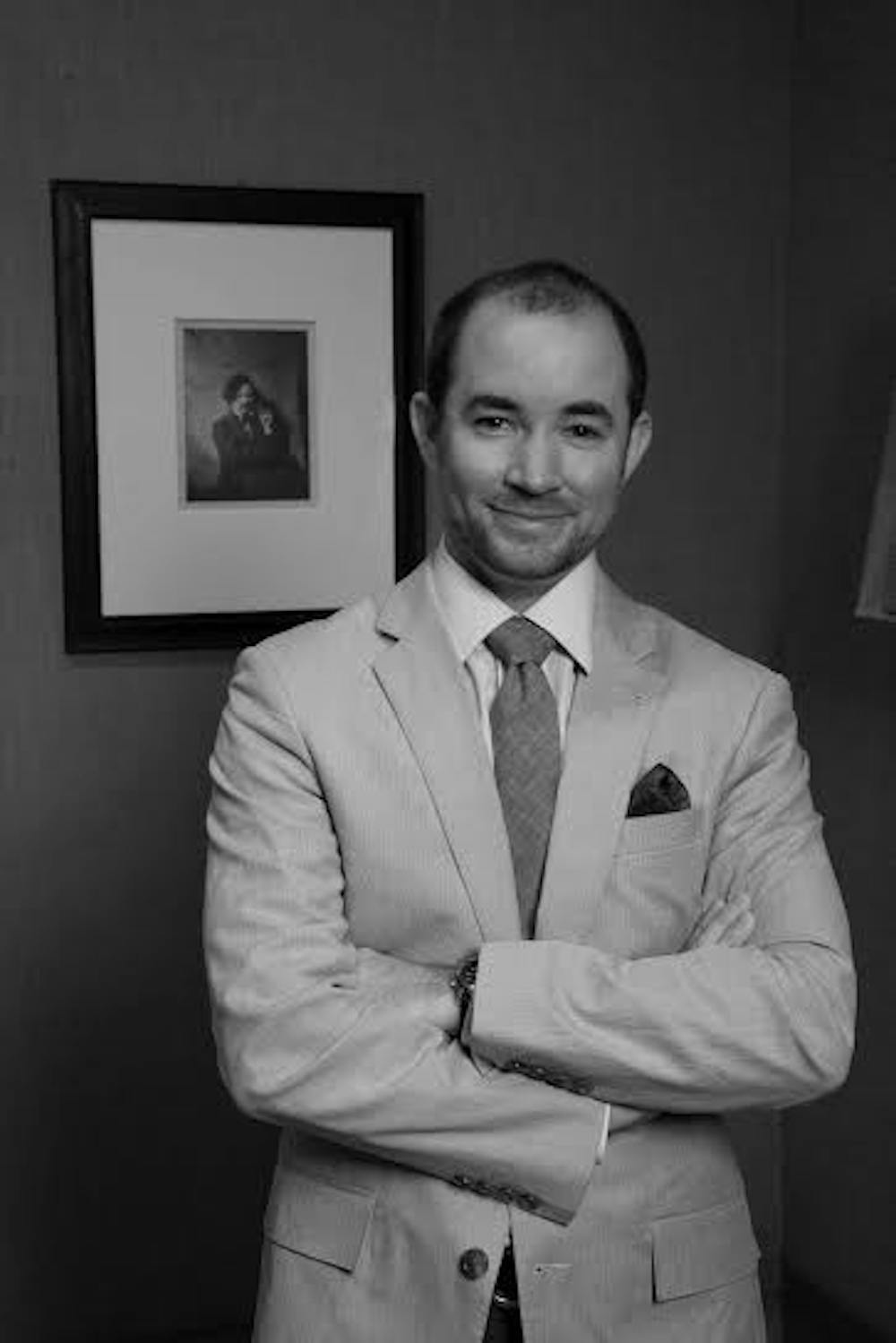In a moving and poignant exhibit, Russell Lord — curator at the New Orleans Museum of Art — brings a different artistic angle to the Fralin Museum of Art as he curates “Gordon Parks: The Making of an Argument,” an exhibit open until Dec. 21.
The exhibit includes both published and unpublished photographs taken by famed African-American photographer Gordon Parks, who worked to depict gang violence in late 1940s Harlem.
Parks is best known for his documentary photography of Leonard Red Jackson, the 17-year old leader of Harlem gang The Midtowners, which was first published in a photoessay in LIFE magazine in 1948.
Arts & Entertainment: How would you classify photography?
Russell Lord: “Photography” is such a complicated word. I try to avoid making broad statements about it. Is photography art? I think it really depends on the photograph — from photo to photo, the story can be different. I might describe this … more narrowly than some of my colleagues, because I would limit it to things that were self-consciously made as art, were intended as works of art and were presented in fine art contexts.
A&E: Do you think Gordon Parks saw what he was doing as art or documentary?
RL: That’s an interesting question, because he made a little bit of everything in his career. I think that he saw these [photographs] as straddling the line — what he probably would have said is that they’re artful documents. However, I would say that he, at this point, is really leaning towards documentary.
A&E: What initially piqued your interest in Gordon Parks? Why him?
RL: It began with a circumstantial discovery. When I arrived in New Orleans a few years ago, I realized that our collection was weak in terms of representing African-American photography, which I feel is a responsibility we need to take seriously. I’d known of Parks before, and had actually met him a long time ago.
I wanted to dig deeply into the making of [his] essay. [In making this exhibit], I wanted this to be a model for what other people could do with Gordon Parks or even other LIFE photographers. We have a responsibility to tell a diverse set of stories with photography in New Orleans. I was interested in this story because it’s one of a few really great ones dealing with black identity in America.
A&E: Let’s go specifically into the photo essay itself. Why do you think the gang trusted Parks? Assuming there was a common understanding between artist and subject, what is allowed in photography in terms of the violation or entrance into private life?
RL: They trusted him because he was very careful in building the trust. He did not take a single photograph for the first two weeks. At a certain point, RJ said, “Hey, Mr. Parks, are you going to use that thing you’re carrying around?” Gordon was a charming man, even at this time he was photographing in Midtown for an article on fur fashion … he went from shooting models in one of the richest parts of the city to the poorest of the poor in Harlem, and he got along with both swimmingly. That was his power as a photographer: he cultivated an incredible amount of access wherever he went, whether with Ingrid Bergman or a poor kid in the slums of Brazil.
He also really was on the side of the gang — he was a fan of humanity, and he loved the people he got to know. It never seemed disingenuous to the people, because it wasn’t.
A&E: Do you think he felt his assignment was legitimate? Or did he see it as a gimmick in place by LIFE magazine to show criminal African-American culture?
RL: No, he thought it was a good opportunity. He proposed the story to them, which is a really important part — this is a really interesting story. He walks into the building of LIFE magazine, and somehow makes his way to [Life editor] Wilson Hicks’ office, which is uncommon. And Hicks looks at his pictures, surprised he made his way past all of the desk clerks. He then says, “You have some very powerful images — did you have a story in mind?”
A&E: Was Parks more outstanding in LIFE as a fashion or a documentary photographer?
RL: Both. He really forged his identity as a documentary photographer — he would go on to have another story on a Harlem family, one about the Black Panther movement, one about a young boy in Brazil living in poverty. Those were the things he became known for — those stories always say, “Words and images by Gordon Parks.”
The fashion pictures are credited at the beginning of the magazine in small print. He didn’t care to have much ownership over those things — [the photo essays] were the projects that were closest to his heart.
A&E: As you mentioned previously, the photographs were not flattering to Red Jackson. They didn’t really reveal him as a whole person, but rather just a gang member — as you told us, after the essay was published, he said, “Damn, Mr. Parks, you made a criminal out of me.” Do you think that Parks’ race may have affected readers’ views of his photographs as true to life?
RL: In the end, the fact the photos were overwhelmingly about violence and despair does a couple of things: it makes it an issue that the reader can ignore, whether they are black or white or racist or not. What the pictures do is that they frame Red Jackson as both a victim and a perpetrator of crime. Because of that, it engages him in an endless circle of activity that we cannot do anything about. Unlike some of the most successful social essays in news media, there is no call to arms, no, “This person is worth saving, because…” There is no resolution to the issue. Most people dismissed it anyway, but it was easier to dismiss as the product of a black person [chronicling other black people].
A&E: Do you think that Gordon Parks as a photographer believed that photographs could be a medium for social change?
RL: Yes. I think he actually says just that in his autobiography. I would almost argue that they can’t — a lot of my research is predicated on the argument that photographs really are mute.
A&E: Do you think that, specifically in the case of Gordon Parks, due to a lengthy process by LIFE editors of cropping and choosing certain photographs, that the story he intended to tell was somehow misrepresented by LIFE?
RL: In this case, the story was distorted. He managed to get a decent amount of it in the text, but this photo essay was a unique case within his career. Later on, he did manage to tell the stories he wanted to, because he was so successful at merging context with photography. In this case, it was not the story he wanted it to be.
A&E: What is your favorite Gordon Parks photo?
RL: One of the ones I think is more powerful is the portrait of Red Jackson looking out the window, beginning the photo essay. It is Red’s most famous photograph — and Parks got it the first time, he only took the shot once. It goes to show how deep their relationship had become. They were clearly working together to make that picture, even though it looks off the cuff and unposed. I see the humanistic relationship between the two, and I see Parks thinking and worrying about him in that photo.
A&E: At its core, what purpose do you think photography serves in our society?
RL: Photography makes us think about ourselves. It can teach us a lot about the way the world works, but only if we examine it critically. The fact that Gordon Parks’ LIFE essay turned out the way that it did — those pictures had a profound influence on a lot of people, and we must ask why, and was it for the right reasons. Examining photography can tell us a lot about the motives, aspirations and dreams of humanity.







